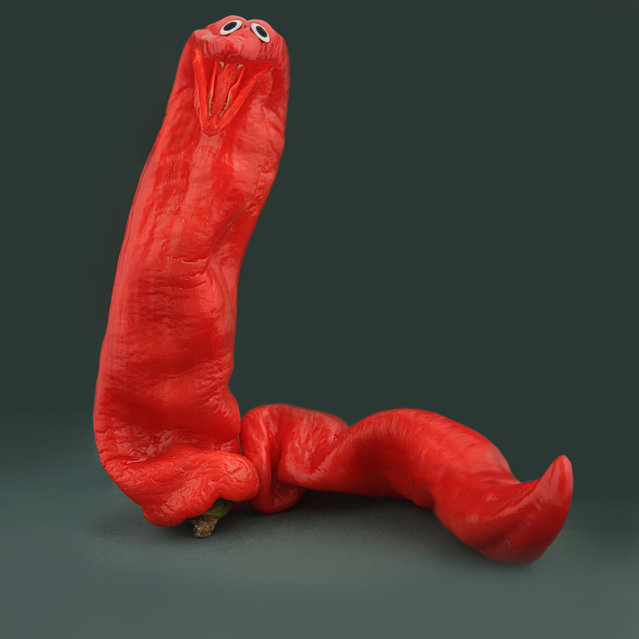
“Red Pepper Snake. The Red Pepper Snake is found in a diversity of grassy habitats that are usually wet or damp, although not necessarily near permanent refrigerated areas.
They are encountered along the edges of refrigerators or sinks. They often climb the kitchen shelves in search of prey, feeding on small croutons, raisin ants, and other inveggiebrates. Adults are very slender and seldom reach lengths of more than 10 inches.
These snakes have somewhat a hot temper and might bite if handled. But, if, for some reason you decide to bite them first, be aware that side affects such as skin rash, indigestion, heartburn and other types of body burning are not uncommon...
However, despite ther looks and side effects, the Red Pepper Snake still remain an excelent choice for spicing up your gastronomical life!”. (Photo and comment by Vanessa Dualib)
They are encountered along the edges of refrigerators or sinks. They often climb the kitchen shelves in search of prey, feeding on small croutons, raisin ants, and other inveggiebrates. Adults are very slender and seldom reach lengths of more than 10 inches.
These snakes have somewhat a hot temper and might bite if handled. But, if, for some reason you decide to bite them first, be aware that side affects such as skin rash, indigestion, heartburn and other types of body burning are not uncommon...
However, despite ther looks and side effects, the Red Pepper Snake still remain an excelent choice for spicing up your gastronomical life!”. (Photo and comment by Vanessa Dualib)
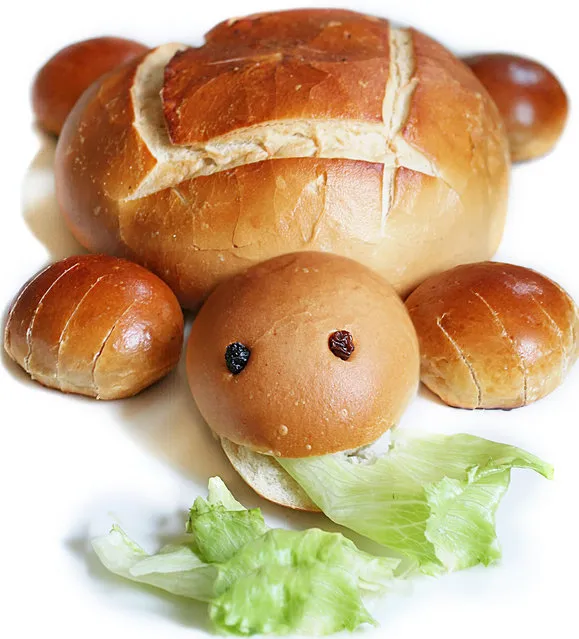
“Turtle Bread. An endangered species during breakfask, lunch and dinner!”. (Photo and comment by Vanessa Dualib)
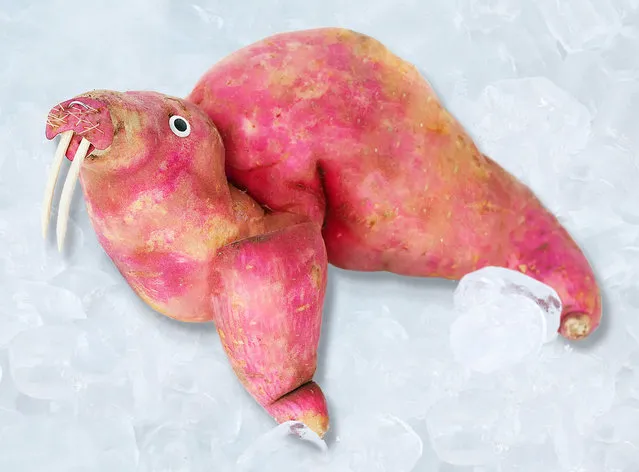
“Behold! The magnificent Fridge Walrus... Even more rare than the Arctic and Pacific Walrus is the Fridge Veggie Walrus.
This interesting and sweet creature lives hided inside frost-free freezers all year long, usually behind the frozen fishes and on top of the ice cubes.
Thanks to the increasing popularity of the use of sweet potatoes in dishes all over the world this fascinating creature has unfortunately also became an endangered species after the Thanksgiving of 1992.
As a member of the Fridge Walrus Appreciation Society and also acting as a guardian of this species, I must beg to all of you hungry fridge owners out there that if you happen to open your fridge freezers and see one of them in there... be conscious!
Save the Fridge Walrus!
...and just eat one of those frozen pepperoni mini-pizzas that I know you got in there instead!”. (Photo and comment by Vanessa Dualib)
This interesting and sweet creature lives hided inside frost-free freezers all year long, usually behind the frozen fishes and on top of the ice cubes.
Thanks to the increasing popularity of the use of sweet potatoes in dishes all over the world this fascinating creature has unfortunately also became an endangered species after the Thanksgiving of 1992.
As a member of the Fridge Walrus Appreciation Society and also acting as a guardian of this species, I must beg to all of you hungry fridge owners out there that if you happen to open your fridge freezers and see one of them in there... be conscious!
Save the Fridge Walrus!
...and just eat one of those frozen pepperoni mini-pizzas that I know you got in there instead!”. (Photo and comment by Vanessa Dualib)
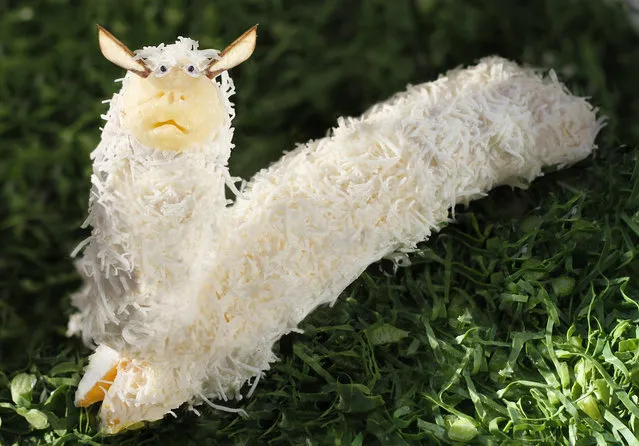
“Dalia, the Llamanana. Dalia is a cute little Llamanana that lives somewhere up on the Peruvian highlands.
Although Llamananas are usually used as pack animals, because of their docile temperament, intelligence, and low maintenance they also make great pets and companions.
One interesting fact about Llamananas is that they don't bite. However, they do spit when they're agitated, but that's mostly at each other. And Dalia here has guaranteed me that she “has never spat at anybody that didn’t deserve it….”
She like to wear wool. Loves sunny days, fresh new grass, the Rascal Flatts and has a thing for Kuzco (llama-version) from the The Emperor’s New Groove film.
She was so sweet that she even allowed me to take a picture of her so I could remember her forever.
Thank you, Dalia”. (Photo and comment by Vanessa Dualib)
Although Llamananas are usually used as pack animals, because of their docile temperament, intelligence, and low maintenance they also make great pets and companions.
One interesting fact about Llamananas is that they don't bite. However, they do spit when they're agitated, but that's mostly at each other. And Dalia here has guaranteed me that she “has never spat at anybody that didn’t deserve it….”
She like to wear wool. Loves sunny days, fresh new grass, the Rascal Flatts and has a thing for Kuzco (llama-version) from the The Emperor’s New Groove film.
She was so sweet that she even allowed me to take a picture of her so I could remember her forever.
Thank you, Dalia”. (Photo and comment by Vanessa Dualib)
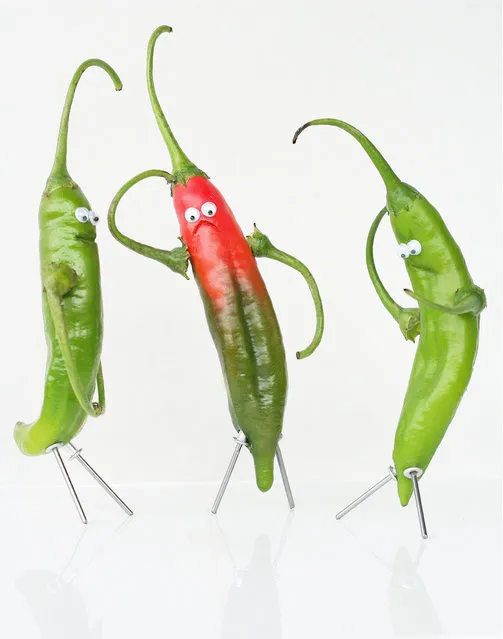
“The Mysterious Case of Pepe, the Pepper.
Pepe was a member of a small Green Pepper community in the countryside of Mexico… however… Pepe was different…he never felt he fitted the mildly manners of his fellow green peppers. Pepe was a temperamental and hot-headed pepper who really wanted to spice up his life! He had dreams and hopes that no one in his community understood.
But he didn’t mind. Simply because he always believed he could.
One day after a discussion with a friend, Pepe went to bed. When he woke up he was like this… half midly green, half hot red.
Dr. Scoville, the community doctor, couldn’t find a reasonable explanation. Ana Heim, the community leader insisted it was just a fever.
But Pepe knew better. He knew it was the dawn of his destiny. And so, against all advices, he left. He went to pursue his dreams… and maybe, just maybe… to finally find himself…
Pepe now lives in Avery Island, Louisiana. Works for Mc Ilhenny’s Co. Tabasco. And has recently married a beautiful and hot Jalapeña pepper. And even though they do have a few heated arguments, they are, indeed, very happy!”. (Photo and comment by Vanessa Dualib)
Pepe was a member of a small Green Pepper community in the countryside of Mexico… however… Pepe was different…he never felt he fitted the mildly manners of his fellow green peppers. Pepe was a temperamental and hot-headed pepper who really wanted to spice up his life! He had dreams and hopes that no one in his community understood.
But he didn’t mind. Simply because he always believed he could.
One day after a discussion with a friend, Pepe went to bed. When he woke up he was like this… half midly green, half hot red.
Dr. Scoville, the community doctor, couldn’t find a reasonable explanation. Ana Heim, the community leader insisted it was just a fever.
But Pepe knew better. He knew it was the dawn of his destiny. And so, against all advices, he left. He went to pursue his dreams… and maybe, just maybe… to finally find himself…
Pepe now lives in Avery Island, Louisiana. Works for Mc Ilhenny’s Co. Tabasco. And has recently married a beautiful and hot Jalapeña pepper. And even though they do have a few heated arguments, they are, indeed, very happy!”. (Photo and comment by Vanessa Dualib)
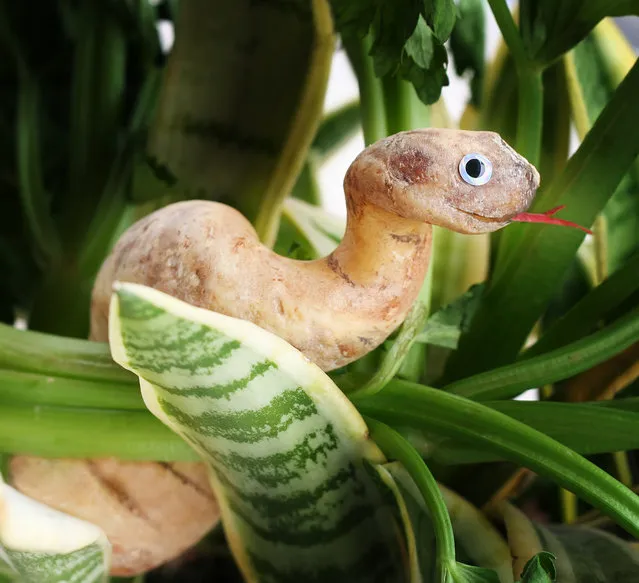
“Cassava Snake. The Cassava Snake can be found in all types of Salad Bowls... these guys are usually so well camouflaged, that they are virtually impossible to be seen among all the fresh salad leaves, tomatoes and potatoes...
However if you are surprised by one, do not panic. The Cassava Snake it is usually not aggressive and normally it just contents itself with eating a few seasoned croutons before leaving to search for a new and different Salad Bowl.
So, basically just try to remember to feed them the croutons and everything should be fine”. (Photo and comment by Vanessa Dualib)
However if you are surprised by one, do not panic. The Cassava Snake it is usually not aggressive and normally it just contents itself with eating a few seasoned croutons before leaving to search for a new and different Salad Bowl.
So, basically just try to remember to feed them the croutons and everything should be fine”. (Photo and comment by Vanessa Dualib)
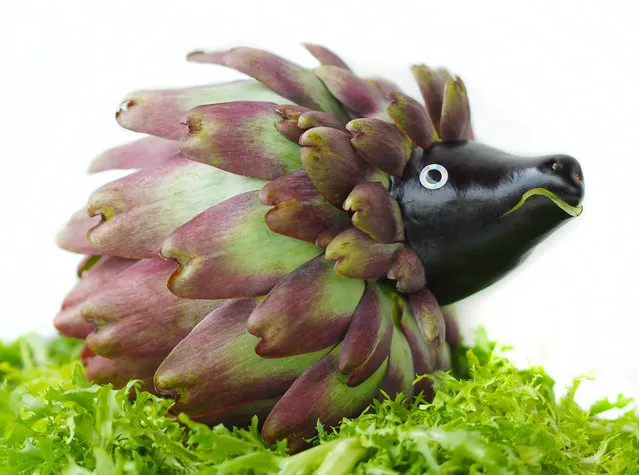
“Porcuplant. Porcuplants are little gnawers that have a coat of not-so-sharp artichoke spines, or quills, that is supposed to defend them from predators, but actually makes them just taste incredible good when mixed up with tomato sauce.
Even though they actually have a tough nature, once the Porcuplant is boiled or steamed he can become quite tender.
The common Porcuplant is a herbivore. It eats leaves, twigs and green plants. It often climbs the fridge to find food and like myself, it is mostly nocturnal, but will sometimes forage for food in the day…
...we actually caught this little guy here sneaking in our lunch salad. Meal time, here in my house, is always full of surprises!”. (Photo and comment by Vanessa Dualib)
Even though they actually have a tough nature, once the Porcuplant is boiled or steamed he can become quite tender.
The common Porcuplant is a herbivore. It eats leaves, twigs and green plants. It often climbs the fridge to find food and like myself, it is mostly nocturnal, but will sometimes forage for food in the day…
...we actually caught this little guy here sneaking in our lunch salad. Meal time, here in my house, is always full of surprises!”. (Photo and comment by Vanessa Dualib)
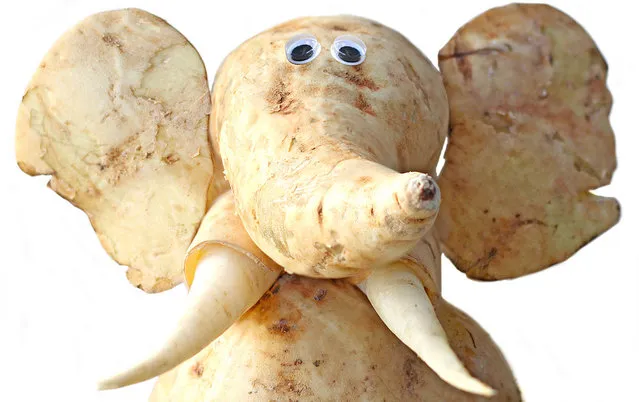
“Potatophant. For many years there were believed to be only two remaining species of elephant – the African and the Indian. However, recent DNA testing has discovered a new type of elephant – the Herbaceous Potatophant!
The Potatophant was originally believed to have been domesticated independently in multiple locations, but later genetic testing of the wide variety of cultivars and wild species proved a single origin for Potatophant ancestors in the area of present-day southern Peru, where they were domesticated nearly 7,000–10,000 years ago!
However the Potatophant is much smaller than its Asian and African cousins, and its definitely the one that tastes better when baked and topped with cream cheese and chives or cheese and bacon...
Because of all its deliciousness potential Potatophants are currently threatened by the excessive consuption and the poaching for the illegal turnip tusk trade”. (Photo and comment by Vanessa Dualib)
The Potatophant was originally believed to have been domesticated independently in multiple locations, but later genetic testing of the wide variety of cultivars and wild species proved a single origin for Potatophant ancestors in the area of present-day southern Peru, where they were domesticated nearly 7,000–10,000 years ago!
However the Potatophant is much smaller than its Asian and African cousins, and its definitely the one that tastes better when baked and topped with cream cheese and chives or cheese and bacon...
Because of all its deliciousness potential Potatophants are currently threatened by the excessive consuption and the poaching for the illegal turnip tusk trade”. (Photo and comment by Vanessa Dualib)
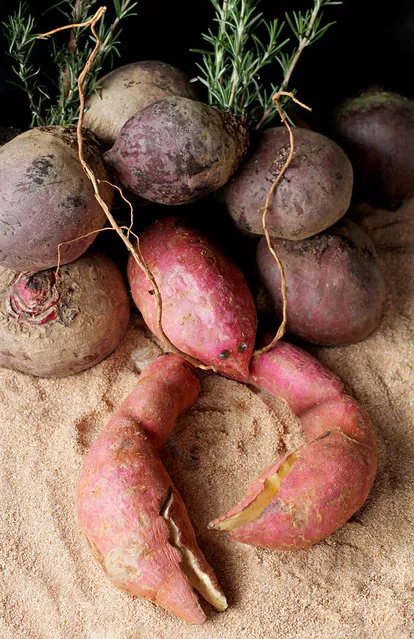
“Red Veggie Lobster. Veggie Lobsters are inveggiebrates that hide in and about fridge weeds and rocky beetroot habitat that can provide adequate food and shelter from predators.
One of the unique characteristics of the species is that they have a very special papaya seed eyes that enable them to see in low light and murky fridges 2 feet below the crisper drawer surface. However, a known fact is that a Veggie Lobster that lives inside a fridge near a stove has a 90% chance of ending up on someone's dinner plate.
And once caught, Veggie Lobsters molt into casseroles, pies, soups, souffles, fries and bisques”. (Photo and comment by Vanessa Dualib)
One of the unique characteristics of the species is that they have a very special papaya seed eyes that enable them to see in low light and murky fridges 2 feet below the crisper drawer surface. However, a known fact is that a Veggie Lobster that lives inside a fridge near a stove has a 90% chance of ending up on someone's dinner plate.
And once caught, Veggie Lobsters molt into casseroles, pies, soups, souffles, fries and bisques”. (Photo and comment by Vanessa Dualib)
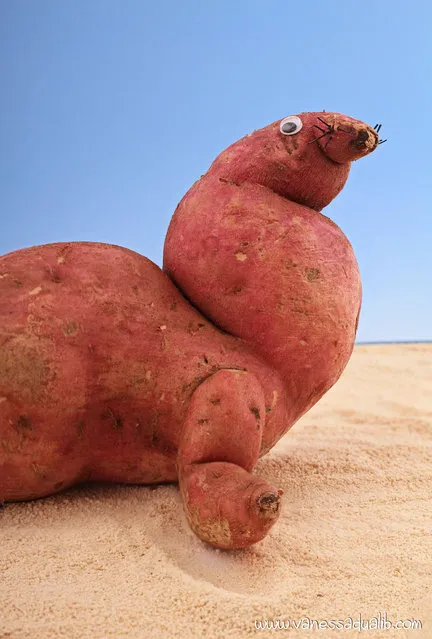
“Miryam, the Sea Elephant.... “posing” for my camera in front of a sunny fridge...”. (Photo and comment by Vanessa Dualib)
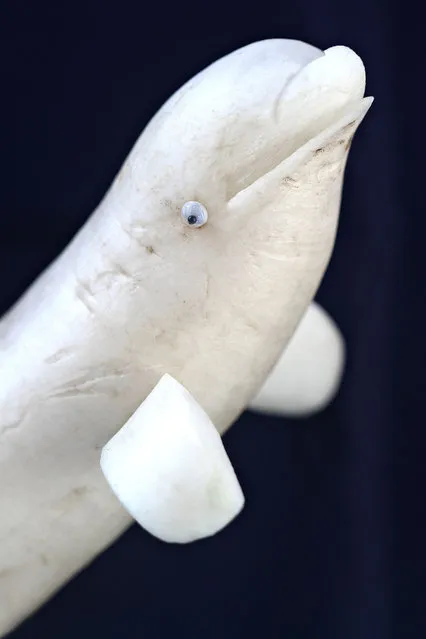
“Turnipluga. The Turnipluga or White Turnip Whale, is an Fridgeartic rootacean. It is also one of two members of the family Bitterdae, along with the Radisnarwhal. It is up to 20 cm (8 inches) in length and an unmistakable all-white color with a distinctive protuberance on the head.
From a conservation perspective, the Turnipluga is considered “near threatened” by the International Union for Conservation of Veggies; however the reason for that is quite the opposite of the other species on the same situation…
The very peculiar fact that threatens the existence of the Turnipluga is their somewhat unpopular slightly bitter taste that causes people to actually favor the extra expansion of the habitat of more popular veggies such as the Pototactopus or the Fridge Walrus into, the already very restricted, territory populated by these bitter in taste but sweet in nature little guys....
So have a good look at him. And on your next meal, give this little guy a chance too, would you? It doesn't even have to be in a salad. Perhaps in a stew or a pie!”. (Photo and comment by Vanessa Dualib)
From a conservation perspective, the Turnipluga is considered “near threatened” by the International Union for Conservation of Veggies; however the reason for that is quite the opposite of the other species on the same situation…
The very peculiar fact that threatens the existence of the Turnipluga is their somewhat unpopular slightly bitter taste that causes people to actually favor the extra expansion of the habitat of more popular veggies such as the Pototactopus or the Fridge Walrus into, the already very restricted, territory populated by these bitter in taste but sweet in nature little guys....
So have a good look at him. And on your next meal, give this little guy a chance too, would you? It doesn't even have to be in a salad. Perhaps in a stew or a pie!”. (Photo and comment by Vanessa Dualib)
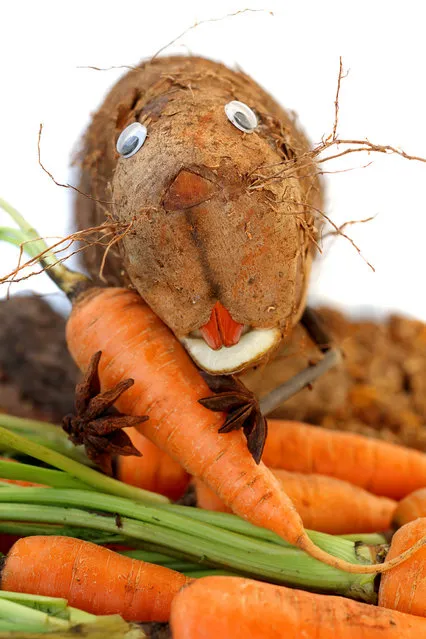
“Meet Chewy… An absolutely adorable and friendly Veggie Beaver. The Veggie Beaver (genus Yamstor) is a primarily nocturnal, large, semi-aquatic veggie rodent. These guys are very industrious creatures. In fact they are often referred to as nature's architects. Beavers like Chewy eat bark, roots, leaves and twigs. But this little guy here, just absolutely looooooves carrots!”. (Photo and comment by Vanessa Dualib)
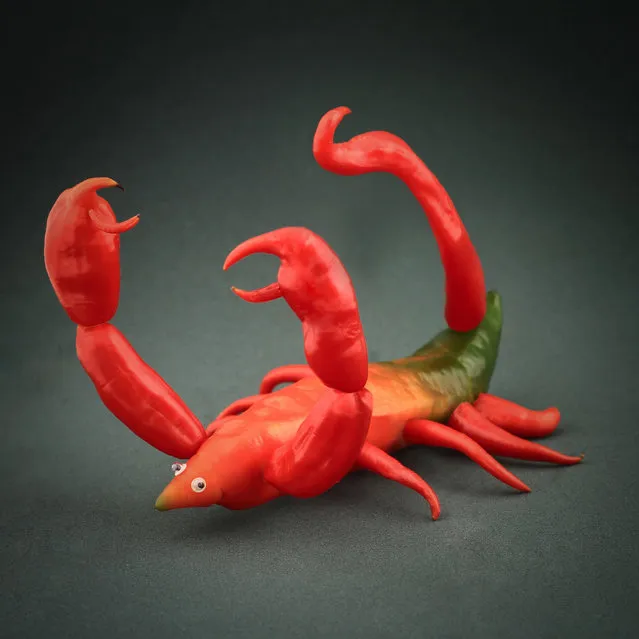
“Red Pepperpion. Red Pepperpions are secretive, nocturnal arachilli which can be spotted in kitchens of arid climates all around the world.
Red Pepperpions are equipped with a delicious (and depending on the quantity...deadly!) stinger at the end of its tail. If you happen to get bitten (or if you bite him!) it will produce a burning sensation on your taste nerves.
However, there is no need to worry, since the fact is that his potent stinger is usually only used when hunting or whenever the Pepperpion feels like he might become part of someones meal...
At daylight or when encountering a larger foe, such as a Saucier Chef, they retreat into burrows inside the fridge or hide beneath the oven”. (Photo and comment by Vanessa Dualib)
Red Pepperpions are equipped with a delicious (and depending on the quantity...deadly!) stinger at the end of its tail. If you happen to get bitten (or if you bite him!) it will produce a burning sensation on your taste nerves.
However, there is no need to worry, since the fact is that his potent stinger is usually only used when hunting or whenever the Pepperpion feels like he might become part of someones meal...
At daylight or when encountering a larger foe, such as a Saucier Chef, they retreat into burrows inside the fridge or hide beneath the oven”. (Photo and comment by Vanessa Dualib)
08 Feb 2013 09:24:00,
post received
0 comments
